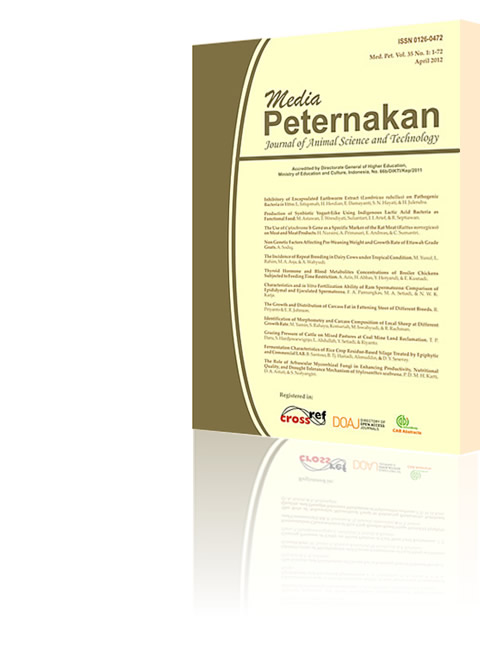The Use of Cytochrome b Gene as a Specific Marker of the Rat Meat (Rattus norvegicus) on Meat and Meat Products
Abstract
Falsification of the origin of livestock meat and its processed with rat meat is a problem that must be overcome to ensure food safety. One way that is often used to detect forgeries by using cytochrome b gene as a marker. The purpose of this study was to create a specific primer derived from cytochrome b sequences in rat (Rattus norvegicus) as the DNA marker to detect any contamination of rat meat on fresh livestock meat and its processed meat products. Meatballs were made from beef meat with the addition of rat 1%-25%, and the meatballs were obtained from traditional markets. DNA extraction was conducted from seven species (goat, chicken, cattle, sheep, pig, horse, and rat) by using phenol-chloroform. The highest success rate in detecting the presence of rat meat in a mixture of beef meatballs at concentration of 15% was 100%. The specific fragment of cytochrome b gene in R. norvegicus has no similarity with the cytochrome b gene from six other species, so it can be used as molecular markers to detect the presence of rat meat contamination in the processed of meat products. Amplified fragment length for goats, chickens, cattle, sheep, pigs, horses, and rats 157, 227, 274, 331, 398, 439 and 603 bp respectively. The amplification of cytochrome b gene in seven species of animals with different fragment length indicated the specificity of cytochrome b gene sequences among species.



